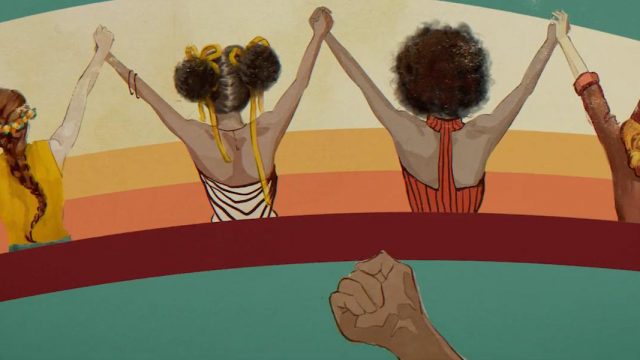Sure, we could sit and wring our hands over what parts of culture get lost to disaster. But the FAR chooses to see what opportunities lie on the other side! The opportunity to make the theatrical experience come back, but better and more inclusive! The opportunity to reassess dubious legacies! The opportunity to cram some art into the beginnings of our TV shows!
Even the specter of death can be a welcome challenge to the spirit, especially if that spirit belongs to Val Kilmer.
At Reverse Shot, Nicholas Russell looks at who is and is not welcome in the beloved movie house:
Like most public spaces in the United States, movie theaters are, by law, desegregated. Under this idealized mandate, there is room for sanitized diversity at the same time that there is the hope that we all generally experience the same things without much variation. This communicates nothing about what it’s like to, say, watch The Hurt Locker in a theater full of white men and women stitched with American flags in their skin or on their clothes who stare at you as you find an open seat.
Val Kilmer talks to Alex Pappademas at Men’s Health a little about his movies, some about his art, and a lot about his spirituality in the face of his cancer diagnosis:
I asked him if the paintings were a way for him to work through the feeling of being known without being known, to help process the weirdness that comes with everyone looking at you and seeing Iceman or the Lizard King. “It’s not so much me thinking about myself,” he said. “It’s more about the icon. The icon of the warrior. Or the gunslinger—that black-and-white justice that’s part of American history. That’s Doc Holliday. And then Jim Morrison is an iconic rock ’n’ roller, a poet.”
Marty Sartini Garner spends three nights with 311 in Las Vegas on the eve of the plague and makes the case for good vibes:
The A.V. Club once went out of its way to call 311 “soulless quasi-funk” in a review of another band. They will never be inducted into the Rock & Roll Hall Of Fame. There will be no well-regarded Netflix documentary. They do not change their set lists up night after night, and they do not jam. They’re never going to die, as I know all too well. So I went to Vegas to learn how to live.
Not to be outdone, Keith Phipps over at Uproxx considers an even more-maligned artist – the Bob Clark who made seminal raunchy teen flick Porky’s – and his horny legacy:
Putting aside extreme examples like Revenge of the Nerds, time has made it easy to be a bit nostalgic for that wave of movies, in part because of the darkness that followed. As the ’80s deepened, sex grew scarier. A breezy comedy could easily make jokes about herpes, but less easily about AIDS. Perhaps not coincidentally, movie sex shifted toward erotic thrillers inspired by Fatal Attraction, films that mingled sex and death in ways, say, Hot Dog… The Movie never attempted.
Finally, Michael Bauman at The Ringer wants to bring back the “glory” of opening title sequences like that employed by the FX series Mrs. America:
Doing away with opening credits is like putting colored highlights in your hair: It can be cool, but it hasn’t been edgy or subversive since 1982, and in order for it to stand out, it needs to operate in contrast to established norms.
Thanks again to Miller for contributing. If you want to be as cool as Miller you might take the opportunity to send an article or more in the next week to ploughmanplods [at] gmail [dot] com. Post other articles from the past week below for discussion and be the Friday you want to see in the world.


